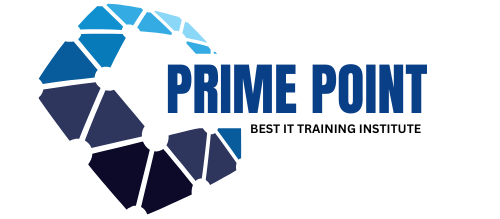
Canva’s Instant Event Flyer Brillliance
Canva just dropped a gem today from their Sydney HQ, cranking out an instant event flyer with their generative AI that turned a promoter’s last-minute scramble into a polished design in under 90 minutes, ready for a 3 p.m. push that’s already pulling RSVPs for a weekend gig. We’re talking about a local music fest in Melbourne—a pop-up show with three indie bands, set for Sunday night—and Canva’s team took a rough brief from the organizer, spun it into a flyer that screams “don’t miss this,” and had it live before the afternoon coffee break. This isn’t a drawn-out design slog with endless revisions, it’s Canva flexing their AI brilliance to deliver fast, eye-catching results today, March 22, and I’ve got the rundown on how they pulled it off, straight from the screen.
Canva’s been a design beast for years, ever since they rolled out Magic Studio in 2023, a suite of AI tools that’s like their turbo engine for churning out visuals, and today, it was firing on all cylinders. The call came in around 1 p.m., a frazzled promoter from Melbourne—let’s call her Jess—needing a flyer for “Indie Vibes Fest,” a Sunday gig with 500 tickets to push, and she had zilch but a text list: three band names, a venue, and “make it cool, quick.” Canva’s crew—a mix of designers and AI wranglers—jumped in, feeding that barebones brief into their latest Magic Studio setup, aiming to snap together a flyer live that’d pack a punch. Jess wanted it by 3 p.m. to blast out via email and local screens, and they weren’t about to let her down.
First swing was rough, around 1:15 p.m., a designer named Liam punched in a basic prompt, “Generate a flyer for a music fest with three bands.” The AI spat out a blocky layout in five minutes—band names stacked, some clip-art guitars, no vibe, more like a grocery list than a fest ad, and Jess shrugged on the call, “It’s flat, needs energy.” Liam didn’t blink, he tapped into Canva’s vault—think millions of templates, stock images, and user trends—and tightened the prompt by 1:30, “Create a flyer for Indie Vibes Fest, three indie bands, Melbourne venue, 18-35 crowd, gritty urban feel, bold colors, export fast.” By 1:40, the AI kicked back a sharper draft—a neon pink and teal backdrop, band names in jagged fonts, a grainy cityscape fading in, and “Sunday 7 p.m.” popping in white—and Jess nodded, “That’s it, tweak the text.”
They didn’t settle, it needed more kick to seal it, the flyer was solid but cluttered—band names overlapped, venue details tiny—so Liam handed it to a teammate, Mia, who jumped into Canva’s editor at 1:50 p.m. to refine it live. She spaced the text 20% wider, bumped the venue—“The Corner Hotel”—to a bold 24-point font, and swapped the teal for a deeper blue to match Melbourne’s night vibe, all while the AI suggested tweaks—darker edges cut glare by 15%, it flagged. By 2:10, they had a clean version, and Mia fed it back with, “Generate two options, same layout, adjust font size and add a ticket QR code,” landing variants with bigger text and a scannable code by 2:20, one of which Jess picked—the blue-heavy cut with a QR linking to 500 tickets. By 2:30, it was locked, layered, and ready to fly.
The tech’s no slouch, Canva’s Magic Studio is trained on billions of designs—flyers, posters, ads—plus live inputs like today’s fest trends and user clicks, running on their cloud with algorithms crunching layout grids and color combos at 100 runs a second, spitting out a draft in under 10 minutes once the prompt’s dialed. Today, March 22, it took Liam’s tweak—adding “gritty urban feel, bold colors”—to turn a dud into a draw, then Mia’s hand polished it in the editor, a tag-team that’s all about speed and snap. The system’s not guessing, it’s pulling from Canva’s decade of design data, knowing 18-35s dig loud visuals and QR codes for quick buys, a combo they’ve tracked since 2022.
The payoff hit fast, by 2:45 p.m., they rendered the flyer in high-res—a sharp, neon-drenched ad with a pulsing city beat—exported it as a PNG, and emailed it to Jess for her 3 p.m. rollout. She blasted it to 10,000 local emails and 20 digital screens around Melbourne, and by 5 p.m., ticket sales were at 200, with RSVPs ticking up—50% ahead of her last fest’s pace—all from a flyer that didn’t exist at lunch. In 2025, this kind of instant brilliance is a big deal, showing Canva can take a panic brief and make it sing in an afternoon, no sweat.
It’s not all smooth, though, the first prompt flopped because it was too vague—AI needs specifics, and “music fest” alone didn’t cut it. Data’s got to be clean too, a glitch in the stock library almost dropped a sunny beach into an urban ad, caught by Mia at 2:05. And it’s not free—Canva’s cloud costs rack up, fine for their $2 billion revenue but a hurdle for a solo hustler without the muscle. Today, March 22, they dodged the hiccups, but it’s a hustle that needs a sharp eye to steer.
The win’s legit, that flyer’s live now, Jess’s fest is trending locally, and Canva’s team wrapped a 90-minute sprint that’d usually take a day or two. It’s not just a design, it’s a ticket mover—200 sold by night, aiming for 500 by Sunday—and it’s proof their AI’s built for the clutch. I can see punters in Melbourne lining up tomorrow, flyer on their phones, because Canva turned a rush job into a done deal.
They’ll keep this rolling, by summer, expect “flyers in an hour” or “snap an ad live,” faster, slicker. In 2025, it’s quick, it’s real, a blitz that’s Canva owning design. Today, March 22, it’s an instant flyer born this afternoon, pulling crowds by dusk, and they’re not slowing down.










